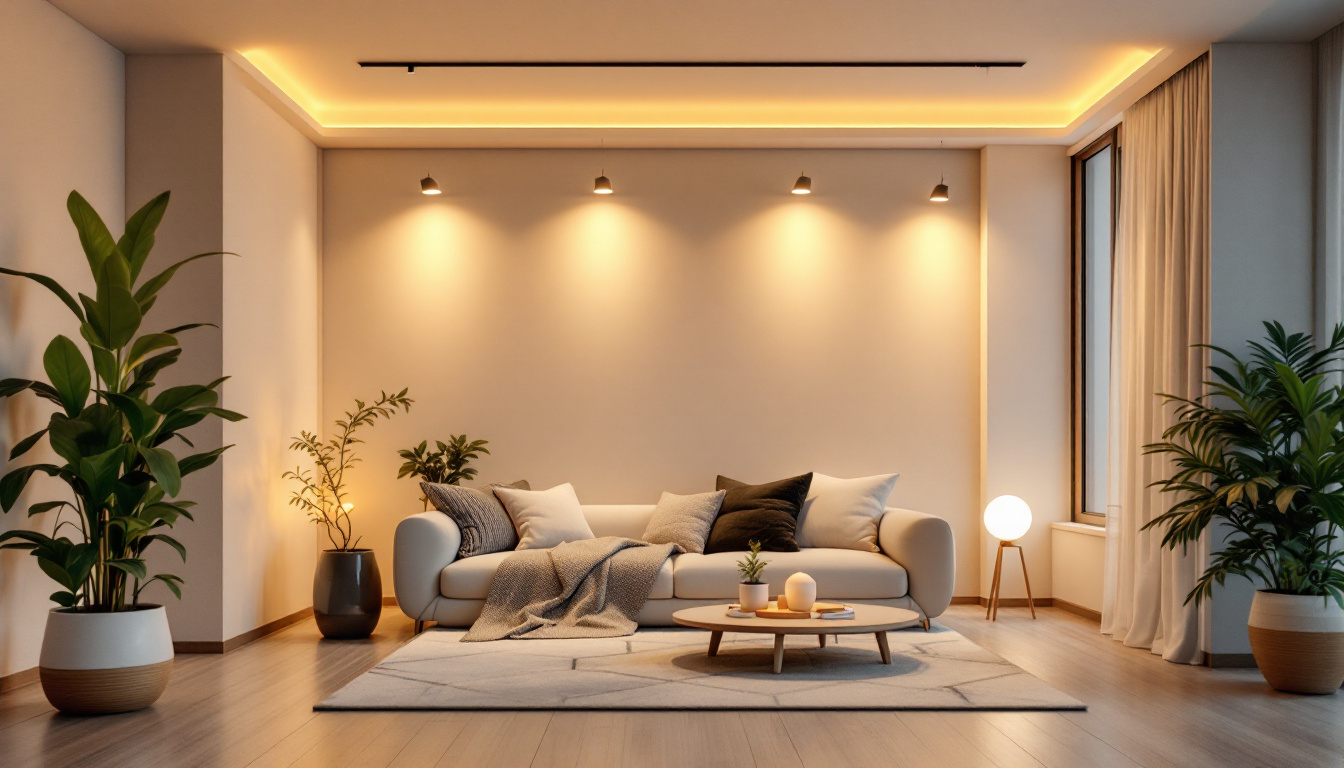
In an era where sustainability and energy conservation are paramount, universal lighting has emerged as a pivotal innovation in the lighting industry. This concept not only enhances the quality of illumination but also significantly contributes to energy efficiency. For lighting contractors, understanding the nuances of universal lighting is essential for delivering optimal solutions to clients while promoting sustainable practices.
Universal lighting refers to a comprehensive approach that integrates various lighting technologies and designs to create an adaptable and efficient lighting environment. It encompasses a range of solutions, including LED Technology, smart lighting systems, and daylight harvesting techniques. The goal is to provide a balanced and effective lighting experience that meets the diverse needs of different spaces.
At its core, universal lighting combines several components that work in harmony to enhance energy efficiency. These include:
Another critical aspect of universal lighting is the consideration of color temperature. Different environments require different lighting hues to achieve the desired effect. For instance, warmer light is often preferred in residential settings for its cozy feel, while cooler light is more suitable for office spaces, promoting alertness and productivity. By selecting the appropriate color temperature, contractors can enhance both the aesthetic appeal and functionality of a space while maintaining energy efficiency.
Moreover, the impact of color temperature extends beyond mere aesthetics; it can significantly influence mood and well-being. Research has shown that exposure to cooler, bluish light can help improve focus and cognitive function, making it ideal for workspaces and educational institutions. Conversely, warmer tones can create a sense of relaxation and comfort, making them perfect for areas such as living rooms and bedrooms. Understanding these nuances allows designers and architects to create environments that not only look good but also support the emotional and psychological needs of their occupants.
Furthermore, the integration of tunable white lighting systems has revolutionized how we approach color temperature in universal lighting. These systems allow users to adjust the color temperature throughout the day, mimicking the natural progression of sunlight. This dynamic approach not only enhances the functionality of a space but also aligns with our circadian rhythms, promoting better sleep patterns and overall health. As technology continues to evolve, the possibilities for creating tailored lighting experiences that cater to individual preferences and needs will only expand, making universal lighting an exciting field to watch.
Implementing universal lighting strategies can lead to significant energy savings. This is particularly vital in commercial and industrial settings, where lighting can account for a substantial portion of energy consumption. By leveraging modern technologies and design principles, contractors can help clients achieve their energy efficiency goals. Furthermore, the integration of universal lighting can also enhance the aesthetic appeal of spaces, making them more inviting and functional. This multifaceted approach not only addresses energy efficiency but also elevates the overall design of the environment.
The most immediate benefit of universal lighting is the reduction in energy consumption. LED lights, for instance, use up to 80% less energy than traditional bulbs. When combined with smart lighting systems that adjust based on occupancy and natural light, the potential for energy savings increases exponentially. This not only lowers utility bills but also reduces the overall carbon footprint of a building. Additionally, the implementation of daylight harvesting techniques allows buildings to maximize the use of natural light, further decreasing reliance on artificial lighting and enhancing the indoor environment.
Another advantage of universal lighting is the extended lifespan of lighting fixtures. LEDs, for example, can last up to 25 times longer than incandescent bulbs. This longevity translates into fewer replacements and less waste, contributing to a more sustainable approach to lighting. For contractors, this means less frequent maintenance and reduced costs for clients over time. Moreover, the durability of LED technology often results in enhanced performance in challenging environments, such as warehouses or outdoor settings, where traditional lighting may fail more frequently due to harsh conditions.
Energy efficiency is not solely about reducing consumption; it also involves creating a better experience for users. Universal lighting takes into account the psychological and physiological effects of light on individuals. Properly designed lighting can enhance mood, productivity, and overall well-being. Research has shown that well-lit environments can lead to improved focus and reduced eye strain, making them ideal for workplaces and educational institutions. By ensuring that lighting solutions are both efficient and effective, contractors can provide clients with a comprehensive service that addresses their needs holistically. Furthermore, incorporating features such as adjustable lighting levels and color temperature can cater to different activities throughout the day, fostering an adaptable and responsive atmosphere that meets the dynamic needs of users.
While the benefits of universal lighting are clear, there are challenges that contractors may face when implementing these solutions. Understanding these obstacles is crucial for developing effective strategies to overcome them.
One of the primary challenges in adopting universal lighting solutions is the initial investment required. While LED technology and smart systems may have higher upfront costs, the long-term savings can outweigh these expenses. Educating clients about the return on investment (ROI) is essential for overcoming budget constraints and promoting the adoption of energy-efficient solutions. Additionally, contractors can explore various financing options, such as energy performance contracts or government incentives, which can help alleviate the financial burden and make the transition more feasible for clients.
Integrating universal lighting systems into existing infrastructure can be complex. Contractors must assess the compatibility of new technologies with current systems and ensure that installations do not disrupt ongoing operations. This requires careful planning and coordination, particularly in commercial settings where downtime can be costly. Furthermore, the integration process may involve retraining staff to operate new systems effectively, which adds another layer of complexity. A thorough understanding of both the technical and human factors involved is essential for a smooth transition.
Many clients may not be fully aware of the benefits of universal lighting or the technologies available. As a contractor, it is vital to educate clients about the advantages of energy-efficient solutions and how they can be tailored to meet specific needs. Providing case studies, demonstrations, and clear communication can help bridge this knowledge gap. Additionally, hosting workshops or informational sessions can foster a collaborative environment where clients feel empowered to ask questions and express their concerns. By actively engaging clients in the learning process, contractors can build trust and facilitate a more successful implementation of universal lighting solutions.
Another significant challenge in the implementation of universal lighting is navigating the myriad of regulatory requirements and standards that vary by region. Contractors must stay informed about local building codes, safety regulations, and energy efficiency standards that govern lighting installations. Compliance not only ensures that projects meet legal requirements but also enhances the credibility of the contractor. This necessitates ongoing education and training for contractors to keep abreast of changes in legislation and industry best practices, which can be resource-intensive but ultimately beneficial for the successful deployment of universal lighting systems.
The rapid pace of technological advancements in lighting solutions can also pose a challenge for contractors. With new products and innovations emerging frequently, it can be difficult to determine which technologies will provide the best value and performance for clients. Contractors must be proactive in researching and testing new products, as well as staying connected with manufacturers and industry experts. This commitment to continuous learning not only enhances the contractor’s expertise but also ensures that clients receive the most up-to-date and effective lighting solutions available.
The lighting industry is continually evolving, and universal lighting is at the forefront of this transformation. Several trends are emerging that will shape the future of energy-efficient lighting solutions.
As smart technology continues to advance, the integration of IoT (Internet of Things) in lighting systems will become more prevalent. This will allow for even greater control and customization of lighting environments. For contractors, staying informed about these advancements will be crucial for offering cutting-edge solutions to clients.
With a growing emphasis on sustainability, the demand for eco-friendly lighting solutions is on the rise. Universal lighting will increasingly incorporate materials and practices that minimize environmental impact. Contractors who prioritize sustainability in their offerings will likely see increased interest from clients who are committed to reducing their ecological footprint.
There is a growing recognition of the impact of lighting on human health and well-being. Future universal lighting solutions will likely place greater emphasis on circadian lighting, which mimics natural light patterns to support biological rhythms. Contractors who understand and implement these principles will not only enhance energy efficiency but also contribute to the overall health of occupants.
Universal lighting represents a significant advancement in the quest for energy efficiency in the lighting industry. By integrating modern technologies, understanding user needs, and addressing challenges, lighting contractors can provide solutions that not only save energy but also enhance the quality of life for occupants. As the industry continues to evolve, staying abreast of trends and innovations will be essential for success. By embracing universal lighting, contractors can play a pivotal role in promoting sustainability and energy efficiency in a rapidly changing world.
Ultimately, the shift towards universal lighting is not just about technology; it is about creating environments that foster productivity, well-being, and sustainability. As lighting contractors navigate this landscape, their expertise will be invaluable in guiding clients toward effective and efficient lighting solutions that meet the demands of the future.
Ready to embrace the future of universal lighting and elevate your projects to new heights of energy efficiency and design? At LumenWholesale, we provide you with the spec-grade lighting products you need at unbeatable wholesale prices. Our commitment to quality and affordability ensures that you can implement cutting-edge lighting solutions without the burden of inflated costs. With free shipping on bulk orders, we make it easy for you to get the premium lighting your projects deserve. Don’t compromise on quality or value—choose LumenWholesale for lighting that meets the highest industry standards. Wholesale Lighting at the Best Value is just a click away. Transform your lighting approach today!

Discover essential insights into classroom lighting that every contractor needs to know.

Discover how lighting contractors can enhance their projects and boost client satisfaction by strategically illuminating wall plaques.

Discover expert tips and innovative strategies for lighting contractors in “4 Ft Light: Advice for Lighting Contractors.” Enhance your projects with practical guidance on selecting, installing, and maintaining 4 ft lighting solutions to illuminate spaces efficiently and effectively..

Illuminate your projects with eco-friendly charm! Discover how solar-powered pumpkin lights can transform outdoor spaces, offering lighting contractors a sustainable and festive solution.